- Bordered swimmer
- Bordered swimmer
- Swimming grubs
- Swimming grubs
Bordered swimmer - One of the most famous and widespread representatives of the family of diving beetles. Many consider the predatory beetle adapted to life in the aquatic environment to be the most malicious pest of fisheries. However, this statement is not entirely true. Swimmer as a victim, he usually selects the weakest and most sick fry, playing essentially the role of an orderly.
Predator Beetle Features
Description of the swimming beetle should begin with its main feature - a yellowish-brown border. Such bordering circled the entire body of the insect. The body length of the beetle does not exceed 3.5 cm, it can be conditionally divided into 3 parts: abdomen, thoracic region and head. All these segments, smoothly turning into each other, are practically motionless. The oval streamlined body shape of the swimmer allows the beetle to easily dissect the water without experiencing much resistance during swimming. The very color of the bordered swimming predominantly dark brown or black.
On the head of a swimmer, whose dimensions are much wider than long, are the sensory organs in the form of antennae. The eyes of the insect are very large, they are also called faceted.
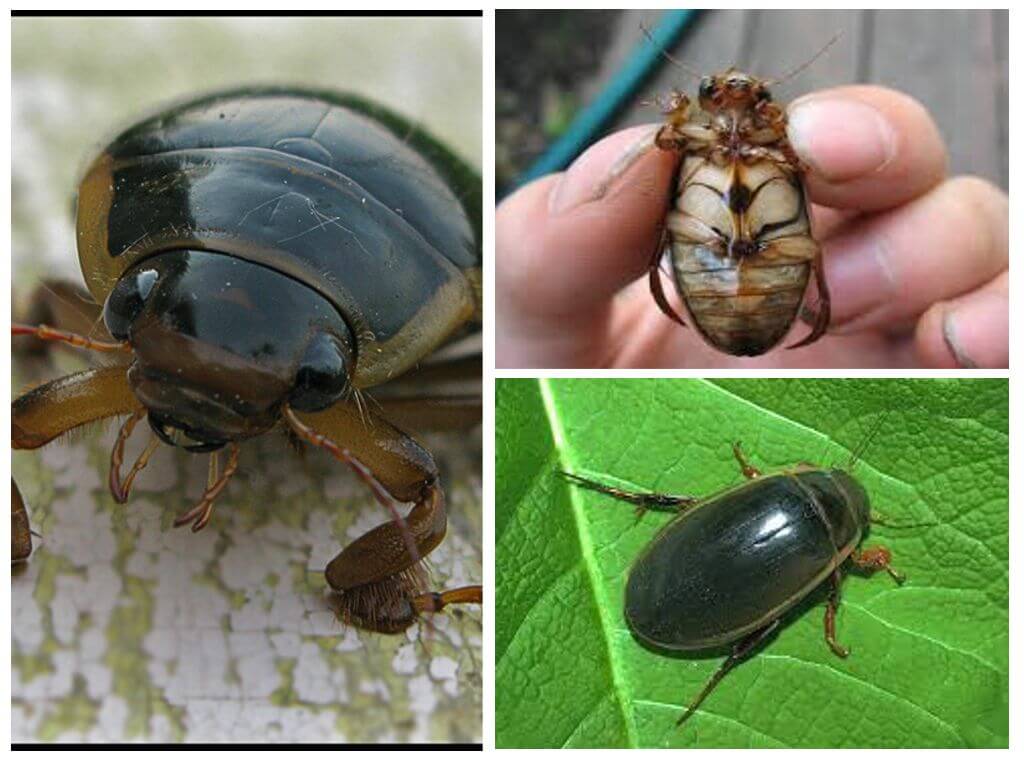
On a note!
Also on the head is a mouth organ with well-developed jaws, on which small palps are located. Thanks to him, the predator recognizes the taste of prey. Therefore, you should take the beetle with your hands very carefully, its bite is quite painful.
Also on the body of the swimmer there are wings, thanks to which the insect flies beautifully. In males, they hide behind smooth, hard elytra. In females, they are ribbed and serve as a shell protecting the delicate parts of the body.
Three pairs of legs allow the bug to land. The hind limbs, extended at the ends and covered with small setae, are used by the beetle as oars. With them, he cuts the water, easily floating to the surface. But for the descent to the bottom requires energetic movements. The swimmer at the bottom is held by two pairs of forelimbs with special hooks at the ends. How the insect looks can be seen in the photo.
The presence of special spiracles located on the sides of the abdomen allows the swimmer to breathe air. Exposing the back of the abdomen from water, the insect gains air, after which spiracles are included in the work.
The favorite habitat of a fringed swimmer is a lake or a pond, that is, such a reservoir where there is no strong current and there is a good supply of food. These bugs can be found in most European countries, in the Caucasus, in Japan. They are also widespread in Yakutia and North America.
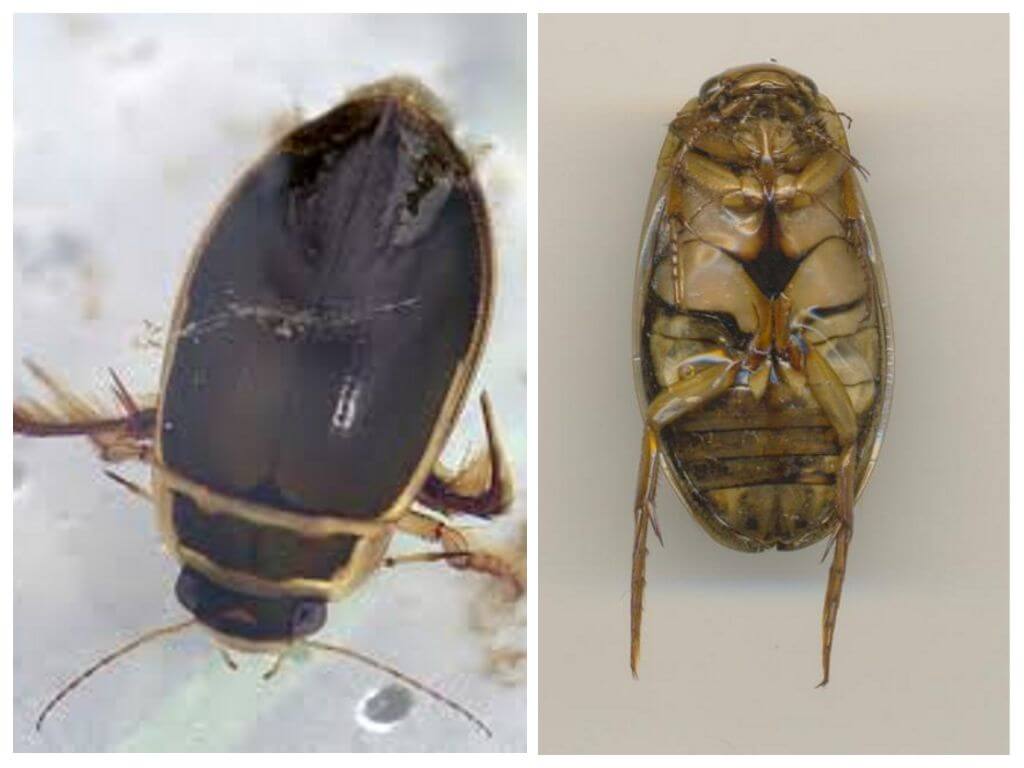
Life expectancy of beetles of floaters ranges from 0.5-2.5 years. In nature, they usually live about a year, but when creating the necessary microclimate at home, beetles can survive up to 3 years. The main thing to know is that the swimmer eats.
Nutrition
These water bugs are considered real gluttons. Small insects and their larvae, snails, tadpoles, fish fry - this is what the fringing edible eats. With a shortage of small food, they are able to attack even a frog or newt. A large accumulation of swimmers in a pond can significantly reduce the number of fish living in it.
Caviar laid in shallow water is another favorite food for a swimmer. Having a very varied menu and good appetite, the insect is able to eat a large amount of food. Due to its overabundance, it may even be difficult to rise to the surface of the water, no matter what efforts the swimmer makes. The beetle solves such a problem by burping out excess food and emptying the body. As a result, body weight decreases, which contributes to a successful recovery.
Predatory swimmers feel blood very well. So even its drop falling into the pond can collect nearby insects. Pack attacks are also possible.
Interesting!
Swimmer beetle larva is the most bloodthirsty in the world. In a day, she is able to destroy about 50 tadpoles. The presence of saber-shaped curved sharp jaws gives her the opportunity to attack even large fish.
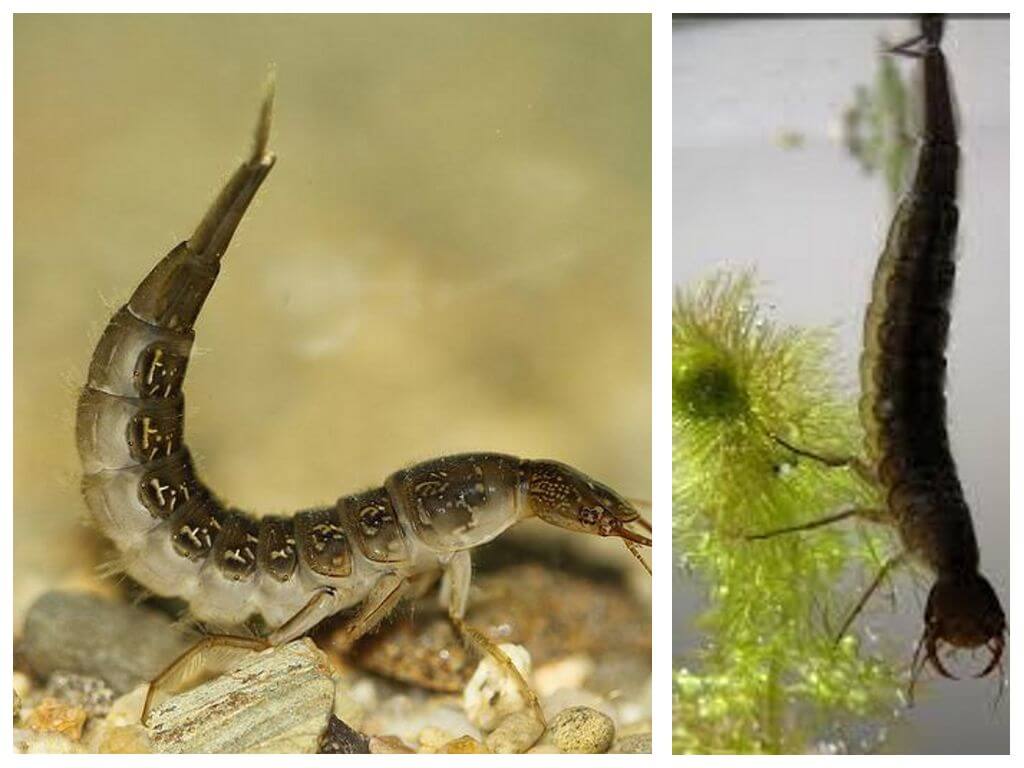
No less appetite for swimmer larvae, and this despite the fact that they do not have a mouth organ. The larva grabs its prey with powerful jaws, after which it releases a special liquid into it. It is she who becomes the cause of the paralysis of the victim. The next injection of digestive juice helps to digest and liquefy the paralyzed victim, after which the prey is absorbed by small holes located near the jaw directly into the throat.
After such a meal, the larva cleans the residual fragments of the victim with its feet from its jaw, thereby preparing for a new attack. Surprising is the fact that the larvae constantly experience a feeling of hunger and are in search of food.
Breeding
The mating season for swimming beetles comes with the advent of spring. Leaving their place of wintering, they go in search of a suitable reservoir. Having found a partner, the male grabs her, and, holding her forelegs, starts fertilization.
It may happen that a female is selected by several males in a row. In this case, there is a high probability that it can simply suffocate, since the swimmer reproduces in water. Indeed, insects need periodic replenishment of the atmospheric air that they breathe. Therefore, if the mating process is delayed, the female does not have time to get the necessary amount of oxygen, as a result of which she will die.
After fertilization, the female, using the ovipositor, makes a depression in the aquatic plant, where she lays eggs. In one season, it is able to lay about 1000-1500 eggs, of which after 8-40 days (depending on temperature) young offspring are born.
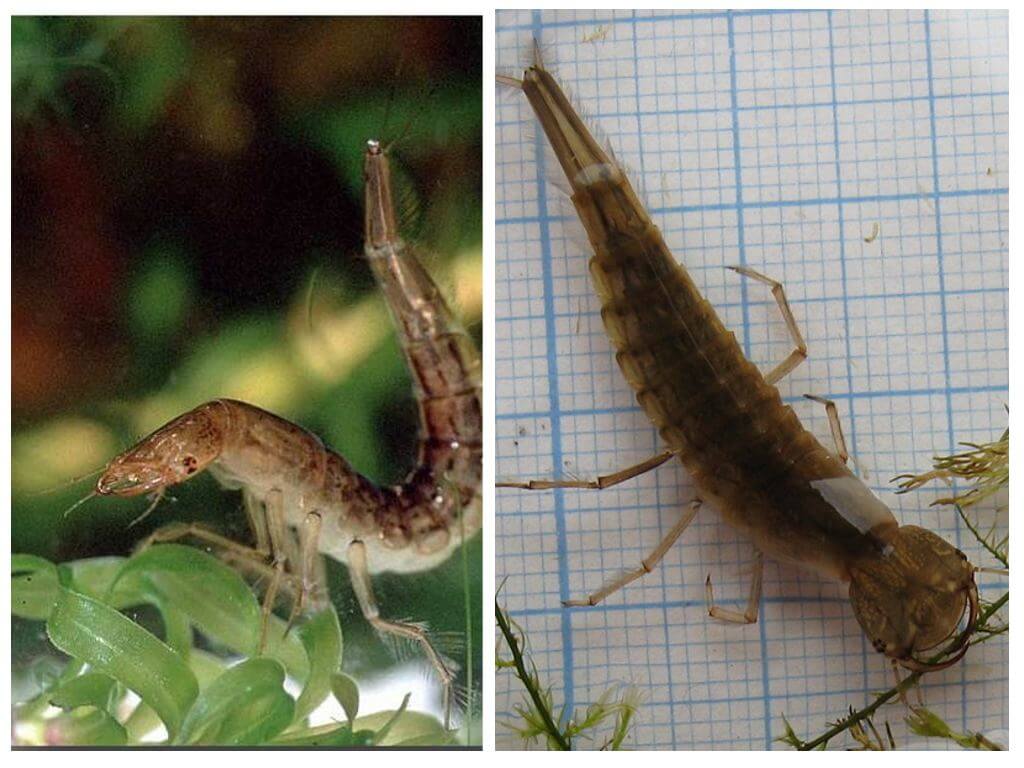
Sufficiently long (up to 10 mm) newly appeared larvae have a slender worm-shaped body. Their main distinguishing feature is the large sickle-shaped jaws, therefore the bite of the larva is no less painful than an adult swimmer. On the head there are antennae, palps and simple eyes. They, like adults, swim perfectly and breathe oxygen, pushing the end of the abdomen to the surface.
After the larva has grown a little, it seeks to crawl out to land and dig into coastal soil for pupation. To do this, she builds a shelter for herself, gluing lumps of dirt with sticky saliva. For a week she lies motionless in her cave until she turns into a chrysalis. After 0.5-1 months, adult swimmers, whose body is painted white, appear from the pupae. Only black eyes and dark paws are clearly visible against this background. After 8-10 days, the soft body is covered with a hard shell, which will be bordered by a noticeable yellow-brown strip.
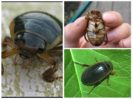
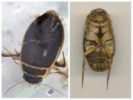
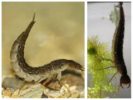
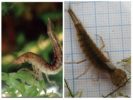




Such bugs were often played in childhood.
In my opinion, playing with swimmers is not safe, because they bite.
We also caught such bugs, and then even organized competitions - whose first will swim to a certain point. Yes, they can bite and very unpleasant.
And I found such bugs in my pond in the country. Would they harm my decorative fish?
I heard that in such cases it is better to install a fountain in the pond. The circulation of water makes it very difficult for beetles to hunt. After all, they love the calm expanse of water. And it is better to catch insects if possible.
And I saw such bugs in my pool, but did not attach much importance. Caught and thrown them away. Now I will know that such guests can also bite.
Are there any who kept swimmers at home?
Once I caught a couple of floaters in the country and put them in a small aquarium. They are very fond of watching the kids, especially the feeding process. They are suitable for bloodworms, pieces of fish and even earthworms. They do not require special care.
Can swimmers be kept with shrimp?
Adult beetles with shrimp could live, but the larvae: their appetite is very developed - they eat everything that moves. Therefore, I do not recommend it.